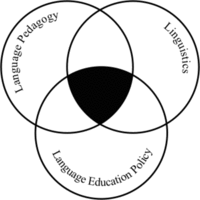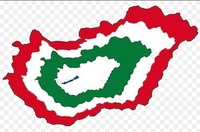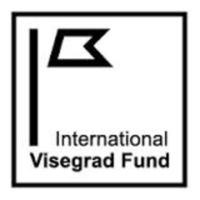Hungary
Countries :: Hungary
Primary Bilingual Programmes in Hungarian Public Education: Summary
Background to the paper
The emergence of bilingual education in Hungarian primary schools raises four main questions:
1. Why has this form of foreign language teaching appeared in the primary schools?
2. What is the number of such programmes, and how are these programmes spread across the country?
3. What beliefs and expectations underpin parental decisions in favour of bilingual programmes? What is the background of the parents wanting their children to be educated in such schools? How great is the demand for such schools?
4. Concerning the emergence and spreading of primary bilingual forms of education in Europe and in Hungary, to what extent these forms share the same features?
![/userfiles/files/dissertation1.gif [/userfiles/files/dissertation1.gif]](/userfiles/files/dissertation1.gif)
The complete paper is linked at the foot of this page.
LANGUAGE TEACHING
Language teaching is one of the most important problems of education in Hungary. Due to our mother tongue – while it is unic and very different among the other European languages – Hungarians are in serious need to learn and use languages especially in this situation: soon becoming one of the members of the Europen Community.
The languages taught in elementary schools are English and German. Children start learning mostly at age of 10. Generally they have 2 or 3 lessons a week. There are some schools providing language teaching from the beginning at age of 6-7 or they give the opportunity to have more lessons: about 6 a week. In secondary grammar schools students have to do two languages, mostly English and German and they can choose as the second one French, Italian, Spanish , Russian or Latin. They have 2-3 lessons a week each. As students leave secondary school they have to pass final exams (Matchs, History, Hungarian Language and Literature, Foreign Language) and many of them passes the state language exams before leaving school while they have better opportunities to get to University. There are some schools where children can learn more serious during their studies, they have about 8 lessons a week. And there are schools where students learn different subjects in a foreign language, we have English, German, French, Spanish, Italian bilangual schools.
The aim is to give students more opportunities to start their life easier and to have more Hungarians speaking foreign languages. There is a change in our education system from the next academic year and one of the main goals is to give at least one language exam.
Science Across Europe gives us a serious help as a progam because we can teach students in a very different way – the most important problem is in it: how to use the language.
The program starts with my asking for information about the prevous knowledge of the students on the given topic – while I am only a teacher of English, my colleges give help so I learn myself as well. We begin work with extending students’ vocabluray first then we discuss the questions in the classroom. They have their examples and arguments mainly from their personal life and therefore they can speak easier about the given topic. We kae the summaries and send the information sheets to diferent schhools and it is an adventure for students to make frienship through Internet, plus they like computer work. The only problem is with it the lack of time and the technical problems – not only in our school but in other countries – it is not an easy thing to get answer from the choosen partner.
The SAE projects are very popular among the schools where the program exist. Children can use their creativity and knowledge in different topics plus they can use the language easier on the other hand it is more interesting and less difficult to work than in the language lessons.
The methodology is completly different and not only the students but the teachers enjoy working with SAE. It makes a little „break” in the serious learning and teaches children thinking and using of a language without working very hard, makes their life colourful, helps them to make friendships and get information from different nations.
Finally a very important benefit of SAE is, that teachers learn different methods to teach and they can use it later on in languge teaching. Plus there are the same topics we teach, as Health, Enviroment, Air pollution, etc.so the SAE helps to work on this topics not only with the course books.
Lőrincz Éva Hungary
English/Hungarian/Trainer
lorincz.eva@posta.net
Ludanyi Lajos
Chemistry/Physics Teacher
ludanyi@berze-nagy.sulinet.hu
V4 CLIL Conference, Budapest
Károli Gáspár University of the Hungarian Reformed Church
June 10, 2006
A report by Maria Pákozdi
V4 - The abbreviation stands for the Visegrad countries ( Slovakia, the Czech Republic, Poland and Hungary) and the conference was sponsored by the International Visegrad Fund (www.visegradfund.org ).
CLIL - The word stands for Content and Language Integrated Learning:"CLIL refers to situations where subjects, or parts of subjects, are taught through a foreign language with dual-focussed aims, namely the learning of content, and the simultaneous learning of a foreign language.” (David Marsh, 1994)
The overall aim of the conference was to enhance CLIL education and co-operation in the region by providing a forum for it, disseminating adaptable practices and innovative ideas and promoting international networking of CLIL schools, which may lead to common projects. The conference also aimed to raise participants‘ awareness of the achievements, the similarities and the ease of understanding among institutions in the region and it also fostered a sense of belonging.
Partners:
Masaryk University in Brno(www.ois.muni.cz),
Žilina University in Žilina (www.utc.sk),
Pedagogical University of Cracow (www.ap.krakow.pl)
Dr Danica Lauková presented the CLIL situation in Slovakia. CLIL or bilingual secondary schools or rather sections of existing schools were set up centrally in 1990 with foreign partners contributing to teaching materials, training and staffing. The variety of target languages is balanced and science subjects are preferred to be taught in the foreign language. An extra year for language preparation is provided. We also heard about an IVF project with selected schools, where students from V4 countries study general topics in English and the national topics in the mother tongue.
Dr Mariusz Misztal was talking about the lack of language teachers in Poland and the very small number of CLIL schools (cca. 20). However, a new international educational project, Educational Gate, aims at setting up European Regional Colleges for students between 6-19 and the language of instruction in numerous subjects will be English.
Ivana Slezakova from the Czech Republic presented the way she teaches computer skills for 13-15-year old students, who are at an elementary level in English and therefore quite some time needs to be devoted to learning the language during the subject lesson. She mentioned the problem of having Czech language computer programmes at school, but luckily, they will be replaced next year by new computers with programmes in English and the room will also be equipped with an interactive whiteboard.
Ilona Hudák from Szabó Lőrinc Bilingual School, Budapest reflected on the issues raised by the guest speakers and presented Hungarian bilingual education.
In the lunch break conference participants had a chance to look at the books Cambridge University Press and Oxford University Press brought to the conference and to try to persuade them to invest in CLIL coursebooks.
In the afternoon students of the CLIL Research Group at Károli University, Fanni Hegedűs, Krisztina Burján and Emese Péter presented their baseline study, which they carried out in 7 schools using the research tools of questionnaires, interviews and lesson observation. Their main findings were three-fold.
The results suggest that the most popular subjects taught in the foreign language are the ones which can be classified as intercultural studies (history, geography and target culture civilization). Students are exceptionally motivated to study through the FL and for the majority it was their own choice at the age of 14 to study at a bilingual school.
Students do not perceive the lack of English language teaching materials in Hungary because their enthusiastic teachers provide them with tailor-made handouts, which implies a lot of devotion on the teachers’ part.
Students find speaking and understanding the most difficult at subject lessons in the FL. They also feel that their Hungarian spelling and orthography suffers a bit from the excessive use of the FL. Karoli students said they would go on researching bilingual education in Hungary in September, 2006.
Stefka Kitanova from Bulgaria introduced conference participants to some European CLIL projects, whose outcome assist CLIL teachers’ day-to-day work. Beside mentioning the CLIL Quality Matrix and CLILCOM ( the multimedia tool for individual teachers to develop their competences in CLIL), she explained what Factworld and Science Across the World can offer, eg. publications, a discussion list and an exchange of ready-made teaching materials as a result of language and subject teachers’ cooperation. She also mentioned a learning phrasebook now being compiled by two CLIL experts, John Clegg and Keith Kelly. The phrasebook will list and explain the necessary terms of each subject or study field.
Danica Gondova from Slovakia raised several issues which could be researched and become the focus of future projects. For example, how do CLIL students acquire competences such as the communicative, the intercultural and the subject competences? What are the needs of CLIL teachers? Subject teachers need some of the skills of language teachers, e.g. developing reading and writing skills, identifying language needs, vocabulary teaching skills, dictionary skills and methodological skills: interactive teaching skills for meaningful learning and a humanistic approach where affective principles are taken into consideration. How can we make sure that learners accept the fact that their CLIL teachers may not always speak flawless English? How and when is it necessary to interfere with learners’ language and focus on language accuracy so that learners really make progress?
At the discussions conference participants elaborated on their viewpoints concerning these issues. We agreed that more time is necessary for learning the subject matter if it is done in the FL or we have to select the core of the material and make sure that students learn it. In another viewpoint we simply need another syllabus for subjects taught in the FL. To top it all, we insist on meaningful learning according to modern pedagogy, which is even more time-consuming than traditional rote-learning. Most of us were very enthusiastic about CLIL education sharing the view that it is very motivating for both students and teachers and that it has reached very good results so far. Some of us, though, thought that CLIL is just one of the ways language education can achieve better results and we should not forget to improve language teaching in the language lessons.
To sum it up, we saw our own practice from completely different standpoints and we got an insight into how CLIL can be shaped by different contexts. Several achievements and Internet sources were disseminated and new international and national links between schools were initiated. Conference participants were invited to the existing CLIL Yahoo discussion list of the Károli CLIL Research Group and several of them have already joined the international group. Further visits and common projects are foreseen between partners and a publication about the conference is to come out in August to be distributed among schools, authorities and professional organisations in the Visegrad countries.


